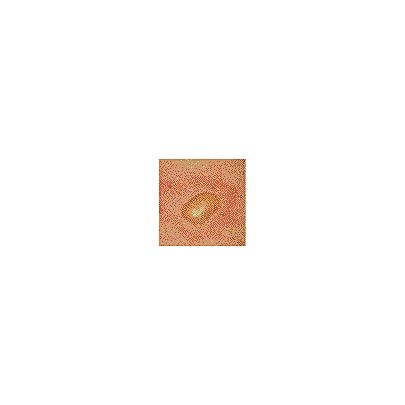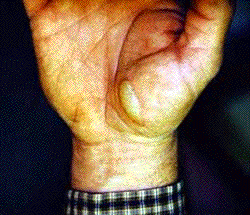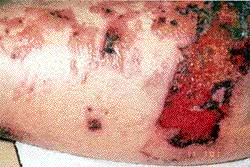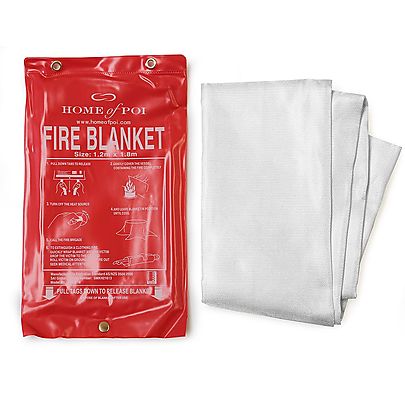Learn Fire training and safety - First Aid for Burns

Full Size Image Download (87px x 87px)
Fire Training - First Aid for Burns
117,318 viewsMikeGinny
GOLD Member since May 2001
Published on 18 Sep, 2007
Of all the injuries that fire performers
accumulate, burns are probably the most common. This article aims to teach performers how to identify the three main classes of heat burns and the appropriate first aid for each class.
This article is not intended to cover general fire safety nor does it cover chemical, electrical, or cold burns. Please do remember your basic fire safety rules, and also remember that if you catch on fire, STOP, DROP, and ROLL.
Classes of Burns
- First Degree Burns. A first degree burn is caused by brief exposure to heat. In a first degree burn, the skin is intact, but red and the burned area is painful. (Fig. 1) Sunburn is a type of first degree burn.
- Second Degree Burns. A second degree burn is caused by prolonged exposure to heat or very high temperatures. In a second degree burn, the skin may be intact or it may appear to be partially peeling. It may also appear moist or have a mottled appearance. Any burn with blisters is second degree. (Fig. 2) The burned area is very painful in a second-degree burn.
- Third Degree Burns. A third degree burn is the most serious type of burn and is caused by prolonged exposure to very high temperatures. In a third-degree burn, the skin is burned through its full thickness. The tissues underneath the skin may show through. The edges of the burn are frequently charred. (Fig. 3) The center of the burned area may not be painful because the pain receptors in the skin have been destroyed along with the skin.
How do I care for a burn?
Regardless of the class of burn, the first thing to do is to STOP THE BURNING!
Get the heat source away from the skin and extinguish any flames. Use a wet towel to put out any burning toys that may be tangled and near the skin and work to remove any hot metal from the skin as quickly as possible. Once the heat source is removed, examine (but do not touch!) the burned area to assess the class of burn.
Care for First degree Burns
If you have identified the burn as first degree, immediately immerse or run the burned area under cold water. A garden hose works nicely. This forcibly lowers the temperature of the burned skin and stops the burn from getting any worse. Most first aid books say that this should last 15 minutes, but I believe that 5 minutes is sufficient to lower the temperature of the skin to the point where the burn will not get any worse. I once saw a patient who had dutifully held a first degree burn in ice for 15 minutes and got frostbite from it, so don't use ice.
After the skin has been cooled, do not apply lotions or salves. Leave the skin uncovered and dry. Most first degree burns resolve after 1-2 days. For pain while the burn is healing, put cold, wet cloths on the burned area and use acetaminophen ("Tylenol") every 4-6 hours or ibuprofen ("Motrin" or "Advil") every 6 hours as directed on the package.
Care for Second degree Burns
If the skin is intact (not peeling) then either immerse the burn or run the burn under cold water for at least 5 minutes to stop the burning. After the skin has been thoroughly cooled, you may apply an antibiotic ointment or cream such as bacitracin or a neomycin/polymixin blend ("Neosporin"). Do not try to burst the blisters.
The burn will usually resolve with minimal to no scarring within 7-14 days, although it may take as long as three weeks. Once the blisters burst on their own, try to trim off the dead skin with fine scissors. This is painless and helps to prevent infection. For pain while the burn is healing, put cold, wet cloths on the burned area and use acetaminophen ("Tylenol") every 4-6 hours or ibuprofen ("Motrin" or "Advil") every 6 hours as directed on the package.
If the skin is broken do not immerse in water as this can lead to infection. Cover the burn in a clean, dry dressing (gauze works nicely) and go to the nearest emergency room.
Care for Third degree Burns
After removing the heat source, cover the area in a clean, dry dressing. If there is clothing stuck to the burn, do not try to remove it. Because victims of even relatively small third degree burns can go into shock suddenly, call an ambulance rather than taking the victim to the emergency room if at all possible. Third degree burns are notorious for getting infected and prompt medical treatment is required. Failure to receive prompt medical attention can result in gangrene, loss of a limb, or sepsis (infection of the blood, which is often lethal). In particular, a bacterium known as Pseudomonas aeruginosa tends to infect severe burns. This infection is very difficult to treat with antibiotics.
When to seek immediate medical attention for a burn!
If a blister is greater in diameter than 2 inches (4-5 cm), if a total burn is larger in surface area than about the size of a deck of playing cards, for any burn involving a break in the skin (including all third-degree burns), if the burn involves the face or genitals, and if the burn is an electrical or chemical burn.
When to seek medical attention during normal working hours
If a burn starts to look infected (red, painful, swollen, warm). However, if an area of redness appears around a burn and spreads over a period of several hours, go to an emergency room as this may signify a serious and life-threatening infection. Also, call your doctor if the burn does not seem to be improving after 10 days or you feel the burn is getting worse.
Remember: When in doubt, seek medical attention for a burn. Burns are complicated medical injuries and may require very advanced care for severe cases.
Pictures of different degrees of burns

Figure 1. An area of first degree burn surrounding a second degree burn.

Figure 2.. A second degree burn.

Figure 3.. A third degree burn. This patient fell into a campfire and did not seek medical attention for three days. The greenish patches in the upper right corner of the photograph signify infection with Pseudomonas aeruginosa, a very dangerious bacterium that is difficult to treat with antibiotics.
Pictures courtesy of www.surviveoutdoors.com Last modified on 8 Apr, 2020
| sindre Member #118689 Reged: Sep 2010 |
Figure three looks like a rather big third degree burn. all burns that has the third degree burn, even if it is only a small aerea and most of it is of a lover degree should be treated as a third degree burn, same goes for second degree burns. Have encountered cases where small third degree burns have caused problems later on because they thought since the smaller aerea didn't really matter. |
| Thrutch Member #139586 Reged: Sep 2011 |
Remember to check burn ointment for best use by dates and that first aid kits are stocked with burn pads. |
| Danny_Pyro Member #158044 Reged: Sep 2012 |
For first degree burns i put a bit of mustard on it after i rinse it in cold water and let it sit for about ten minutes, it helps the burning sensation go away |
| Ray_James Member #157194 Reged: Aug 2012 |
English, Dijon, yellow, sweet? |


